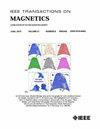一种用于预测经颅磁刺激的精神分裂症患者和健康个体静息运动阈值的混合机器学习算法
IF 1.9
3区 工程技术
Q3 ENGINEERING, ELECTRICAL & ELECTRONIC
引用次数: 0
摘要
由于大脑复杂多变的神经解剖学和功能状态,很难预测静息运动阈值(RMT)作为经颅磁刺激(TMS)治疗所需的剂量参数。我们之前的研究表明,解剖学参数,如线圈到皮层的距离(CCD)、灰质体积(GMV)、去极化GMV (DGMV)、最大电场(E-field)值、神经解剖学和功能磁共振成像(fMRI)得出的连通性都与RMT有关。将54名精神分裂症患者和43名健康受试者的25个脑区fMRI血氧水平检测(BOLD)转化为时间序列,输入长短期记忆(LSTM)模型。LSTM的输出与精神分裂症状态、CCD、GMV、在50 V/m和100 V/m以上去极化的灰质体素百分比(DGMV50)和最大e场值相连接,然后输入人工神经网络(ANN)预测RMT。训练和测试的平均绝对误差(MAEs)分别为0.1176和0.0845,对应于预测RMT值中最大刺激器输出(%MSO)的误差分别为3.6456%和2.6195%。我们的新型混合LSTM-ANN神经网络可以用作预处理程序,以减少测量患者RMT所需的试验数量,并增加患者对所执行程序的舒适度和信心。本文章由计算机程序翻译,如有差异,请以英文原文为准。
A Hybrid Machine Learning Algorithm for Predicting Resting Motor Thresholds in Patients With Schizophrenia and Healthy Individuals Undergoing Transcranial Magnetic Stimulation
Due to the complex and varied neuroanatomy and functional states of brains, it is difficult to predict the resting motor threshold (RMT) needed as a dose parameter for treatment with transcranial magnetic stimulation (TMS). Our prior publications have shown that anatomical parameters, such as coil-to-cortex distance (CCD), gray matter volume (GMV), depolarized GMV (DGMV), and maximum electric field (E-field) value, neuroanatomy, and connectivity derived from functional magnetic resonance imaging (fMRI) are all associated with RMT. For 54 subjects with schizophrenia and 43 healthy subjects, fMRI blood oxygen-level detection (BOLD) in 25 brain regions was turned into time series and fed into a long short-term memory (LSTM) model. The outputs of the LSTM are concatenated with the schizophrenia status, CCD, GMV, percentage of gray matter voxels depolarized over 50 V/m (DGMV50) and 100 V/M (DGMV100), and maximum E-field value and then fed into an artificial neural network (ANN) that predicted the RMT. The training and testing mean absolute errors (MAEs) are 0.1176 and 0.0845, respectively, corresponding to the errors of 3.6456% and 2.6195% of the maximum stimulator output (%MSO) in the predicted RMT values. Our novel hybrid LSTM-ANN neural network can be used as a pretreatment procedure to reduce the number of trials needed to measure RMT for patients and increase patient comfort and confidence in the procedure administered.
求助全文
通过发布文献求助,成功后即可免费获取论文全文。
去求助
来源期刊

IEEE Transactions on Magnetics
工程技术-工程:电子与电气
CiteScore
4.00
自引率
14.30%
发文量
565
审稿时长
4.1 months
期刊介绍:
Science and technology related to the basic physics and engineering of magnetism, magnetic materials, applied magnetics, magnetic devices, and magnetic data storage. The IEEE Transactions on Magnetics publishes scholarly articles of archival value as well as tutorial expositions and critical reviews of classical subjects and topics of current interest.
 求助内容:
求助内容: 应助结果提醒方式:
应助结果提醒方式:


